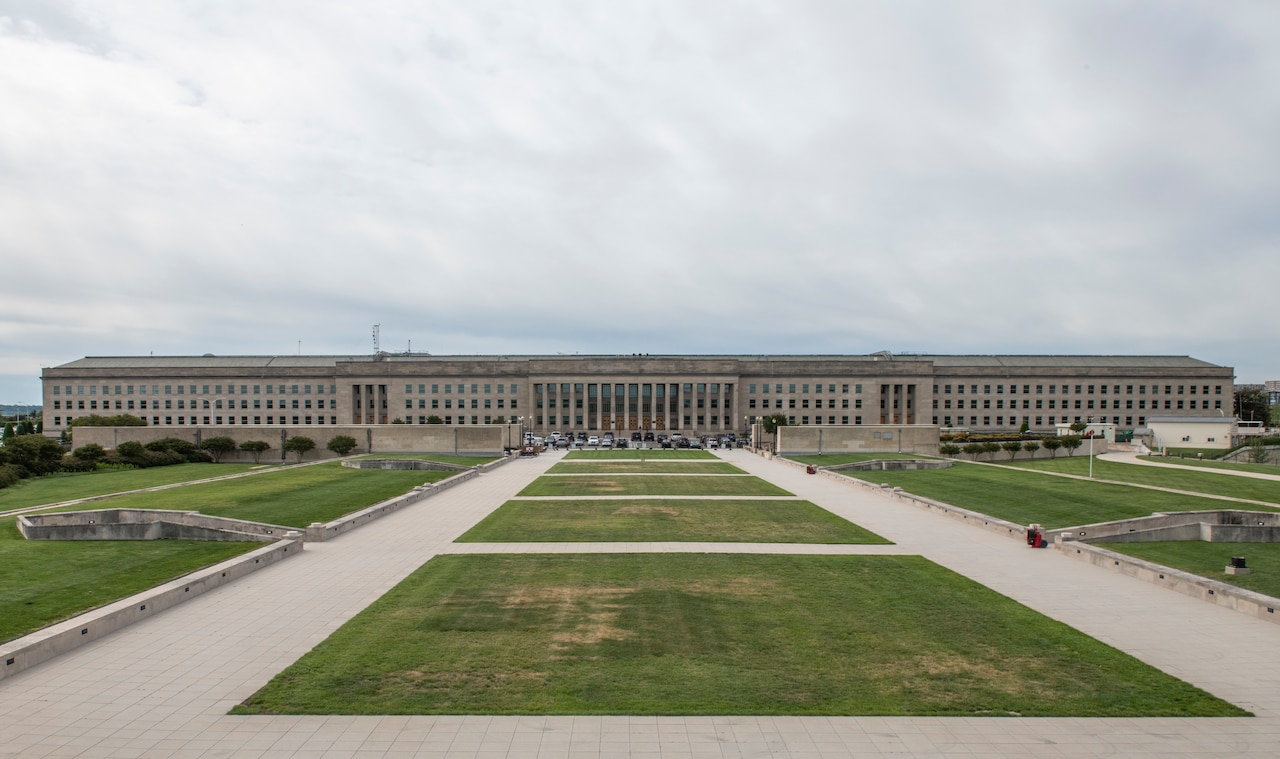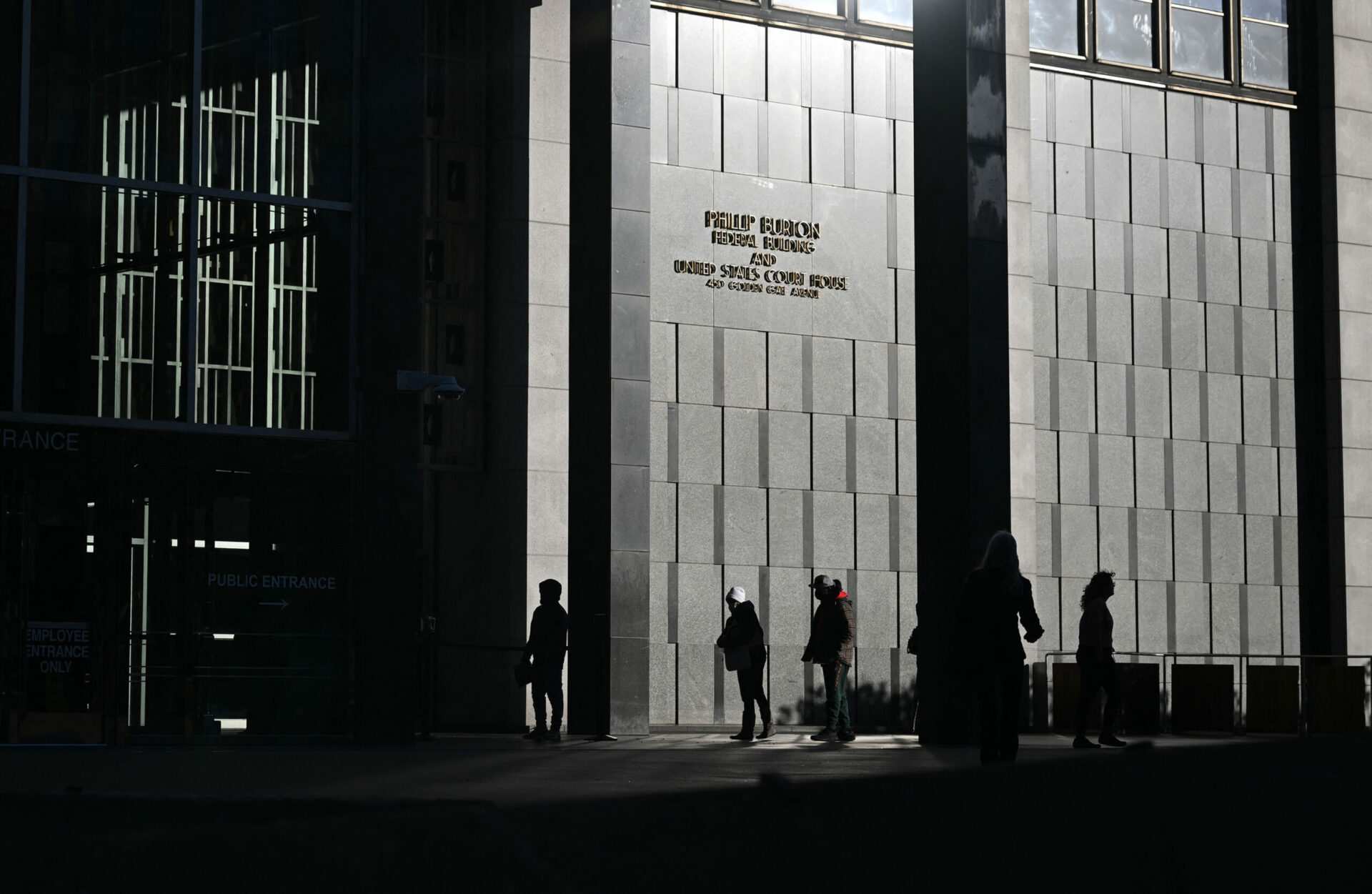Probationary workers from Navy, defense health and logistics agencies first to be cut amid DOD layoffs | Stars and Stripes

Rear Adm. Michael York, commander, Defense Logistics Agency Distribution, tours an Air Beam tent with members of the DLA Expeditionary team during the DLA Distribution Expeditionary Academy held from June 20 to July 3, 2024 in New Cumberland, Pa. (Dorie E. Heyer/Defense Logistics Agency)
WASHINGTON — Civilians working for the Navy and the Defense Department’s health and logistics agencies were the first to lose their jobs as the Pentagon began firing workers this week.
The Navy, the Defense Health Agency and the Defense Logistics Agency confirmed civilian job terminations are underway at those organizations, though information on those firings was limited Friday. The firings are part of a Defense Department-wide effort to reduce the civilian workforce by up to 8%, beginning with 5,400 probationary workers. Those layoffs began Monday, according to a memo released by the Pentagon that was dated the same day.
The Navy does not have the number of civilian personnel fired “readily available for public release,” said Cmdr. Tim Hawkins, the Navy’s assistant chief of information, media operations, production and plans. “The process is in progress. We will look to provide additional information when able.”
The Defense Health Agency also was unable to say how many probationary workers had been fired, though an official with the agency said, “To date, DHA dismissals are restricted to headquarters positions that are administrative in nature.”
The Defense Logistics Agency confirmed Thursday that fewer than 100 civilian personnel of its workforce of 25,000 were dismissed Monday from their jobs.
The civilian workers fired were probationary, officials confirmed. The federal government considers workers to be probationary if they have been on the job for less than one to two years. Probationary workers lack the employment protections of more seasoned workers.
“DLA released probationary employees consistent with the Department of Defense’s broader efforts to ensure resources are aligned with the department’s strategic objectives,” the agency said in a statement.
The Defense Logistics Agency provides logistics support to the military and foreign nations. It is the Defense Department’s largest combat support agency. The agency declined to identify the divisions where the dismissed employees worked or whether more terminations are expected.
The Pentagon is seen in October 2021. (Robert H. Reid/Stars and Stripes)
Workers fired Monday were “the first step” in the Defense Department’s effort to “appropriately align its personnel resources with its critical war-fighting functions,” read the March 3 memo signed by Defense Secretary Pete Hegseth. Their employment, he said, was not in the public interest.
“The department will continue taking steps to implement [President Donald Trump’s] direction to restore accountability to the American public, reduce the size of the federal government’s workforce through efficiency improvements and attrition, and faithfully and responsibly manage taxpayer dollars,” the memo reads.
The firings were planned to start last week. Multiple Pentagon officials were unable to provide a reason for the delay.
The firings will come in waves until officials dismiss the 5,400 workers required by Hegseth, a defense official who spoke on the condition of anonymity said Thursday. The official was unable to say how many layoffs had already occurred or what departments were impacted.
On the same day that the firings began, Rep. Jen Kiggans, R-Va., a Navy veteran, sent a letter to Hegseth urging him to mitigate workforce reductions at the Defense Department. Kiggans expressed concern about how cutting civilian staff with prior military service could impact national security.
“At a time when we are seeing global instability and rising threats from adversaries like China and Russia, it is vital that we protect our skilled workforce and focus on maintaining a robust and capable Department of Defense,” she wrote.
Kiggans urged Hegseth to ensure veterans are not disproportionately affected by layoffs.
“Their unique skills and dedication are critical to maintaining the strength of our military,” she wrote.
Veterans make up about 30% of the federal workforce but comprise nearly half of the Defense Department’s civilian workforce. There are more than 950,000 civilian employees across the Defense Department, according to its civilian careers website.
Democratic lawmakers warned last week the Defense Department is preparing to fire more than 70,000 civilians across its workforce. That would be within the 5% to 8% proposed cut outlined two weeks ago by Hegseth.
“This will inevitably impact defense readiness,” said Sen. Richard Blumenthal, D-Conn. “There’s a domino effect that will extend across the military. People get demoralized and disillusioned. Costs go well beyond dollars and cents.”
Other lawmakers are focused on minimizing impacts to areas of the Defense Department that they consider to be critical, including shipyards, logistics, equipment maintenance, aircraft repair and information security.
In early February, more than a month before Hegseth announced sweeping layoffs, Sens. Jeanne Shaheen, D-N.H., and Susan Collins, R-Maine, wrote a letter to the acting Navy secretary asking for exemptions to the service’s public shipyard workforce in the event of layoffs.

Workers from Port Operations, the Naval Inactive Ship Maintenance Facility, Pearl Harbor, and Pearl Harbor Naval Shipyard and Intermediate Maintenance Facility install the accommodation ladder from the decommissioned amphibious assault ship USS Tarawa onto the pier at Ford Island, Hawaii, on May 13, 2024. (Claudia LaMantia/U.S. Navy)
“Our shipyards cannot afford to reduce their workforces. In fact, [Portsmouth Naval Shipyard in Maine] needs to hire 550 workers annually just to meet Navy demand for the foreseeable future,” the senators wrote.
The Navy has four public shipyards — Norfolk Naval Shipyard in Virginia, Portsmouth Naval Shipyard in Maine, Puget Sound Naval Shipyard and Intermediate Maintenance Facility in Washington, and Pearl Harbor Naval Shipyard and Intermediate Maintenance Facility in Hawaii — that serve as maintenance depots for nuclear-powered submarines and aircraft carriers.
The four shipyards have a combined civilian workforce of more than 30,000 people. But lawmakers have argued the backlog of ships in maintenance in the past decade is, in part, due to a need for more workers.
The Navy wrote last week in a letter to the lawmakers that it was working with the Defense Department to identify critical functions and positions at naval shipyards for exemption. The letter was signed Feb. 28 by acting Navy Secretary Terence Emmert.
“The [Navy] is committed to carry out workforce shaping in a manner that preserves lethality and readiness, while advancing the administration’s imperatives of reduction and cost savings,” according to the letter.
Stars and Stripes reporter Linda Hersey contributed to this report.












